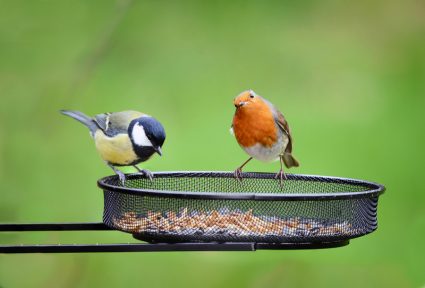
Rabbit repellents are a crucial tool for gardeners who want to protect their plants from these adorable but potentially destructive creatures. But how exactly do these deterrents work? In this comprehensive guide, we will delve into the world of rabbit repellents, exploring the science behind them, their ingredients, their effectiveness, and even natural alternatives you can try.
Rabbit repellents work by using ingredients that rabbits find unpleasant, effectively deterring them from entering your garden or eating your plants. These ingredients target the rabbits’ sense of taste and smell, making treated plants unappealing to them. They come in two main types: taste-based and odor-based. The effectiveness of these repellents can vary and often requires a combination of methods for the best results.
What is Rabbit Repellent?
Rabbit repellent is a substance used to deter rabbits from feeding on plants in gardens and landscapes. Its primary function is to protect plants from damage caused by rabbits, without harming the animals themselves. Rabbit repellents come in various forms, such as sprays, powders, and granules. They often contain ingredients like red pepper, garlic, onion powder, or talcum powder.
The Science Behind Rabbit Repellents
Rabbit repellents work by deterring rabbits from entering your garden or eating your plants. They often contain natural or chemical ingredients that rabbits find unpleasant, such as garlic, hot pepper, or predator urine. There are two main types of rabbit repellents: taste-based and odor-based.
Taste-based repellents make the plant less palatable for rabbits and are typically applied directly to the plant. Examples include those containing capsaicin. Odor-based repellents keep rabbits from an area using fear or a foul smell. They are usually applied to the soil in the perimeter and on foliage to repel rabbits.
Ingredients in Rabbit Repellents
The main ingredients typically found in rabbit repellents include putrescent whole egg solids, garlic, dried blood, capsaicin, sodium lauryl sulfate, potassium sorbate, thyme oil, and dish soap. These ingredients can be found in various combinations in commercial and homemade rabbit repellents. They work by targeting the rabbits’ sense of taste and smell, making the treated plants unappealing to them.
Effectiveness of Rabbit Repellents
Rabbit repellents can be effective in deterring rabbits from damaging plants and gardens, but their effectiveness varies depending on several factors. Factors that influence the effectiveness of rabbit repellents include the behavior and number of rabbits, the availability of alternative food sources, and the type of repellent used.
To maximize the effectiveness of rabbit repellents, it is recommended to use them in combination with other control methods, such as fencing, and to apply them at the end of the day when rabbits are most active. Additionally, alternating repellents can help prevent rabbits from getting used to any particular scent or flavor.
Natural Alternatives to Commercial Rabbit Repellents
There are several homemade and natural alternatives to commercial rabbit repellents that you can use to protect your garden. Some of these alternatives include citrus spray, cayenne pepper, garlic and red pepper spray, blood meal with black pepper and cayenne pepper, planting natural repellents, and using ammonia.
Remember to reapply these homemade repellents after rain or as needed to maintain their effectiveness.
Best Practices for Using Rabbit Repellents
To effectively use rabbit repellents and protect your garden from these creatures, follow these tips and best practices:
- Use natural repellents
- Apply scent-based deterrents
- Alternate repellents
- Apply repellents in the evening
- Reapply repellents regularly
- Plant rabbit-resistant plants
- Use physical barriers
- Remove hiding places
- Encourage natural predators
- Use commercial repellents
In conclusion, rabbit repellents can be a practical solution to protect your garden from rabbits. However, their effectiveness can vary, and it may require a combination of methods to achieve the desired results. Always remember to follow the instructions for any repellent you use and consider the environment when choosing your methods. Happy gardening!
Frequently Asked Questions
What are some examples of rabbit-resistant plants?
Some examples of rabbit-resistant plants include lavender, rosemary, and vinca. These plants have strong scents or tastes that rabbits tend to avoid.
What are the potential adverse effects of using commercial rabbit repellents?
Some commercial rabbit repellents may contain chemicals that can be harmful to other animals, plants, or the environment if not used correctly. Always follow the instructions on the label and use them responsibly.
How often should I reapply rabbit repellents?
The frequency of reapplication can vary depending on the specific product and the weather conditions. However, generally, you should reapply rabbit repellents every 30 to 60 days. If it rains, you may need to reapply the repellent sooner.
Can rabbit repellents harm my pets?
Most rabbit repellents are safe for use around pets. However, it’s always a good idea to check the product label or consult with a professional if you have any concerns.
Are there any other animals that rabbit repellents can deter?
Yes, some rabbit repellents can also deter other animals like deer, squirrels, and groundhogs. This will depend on the specific ingredients used in the repellent.










